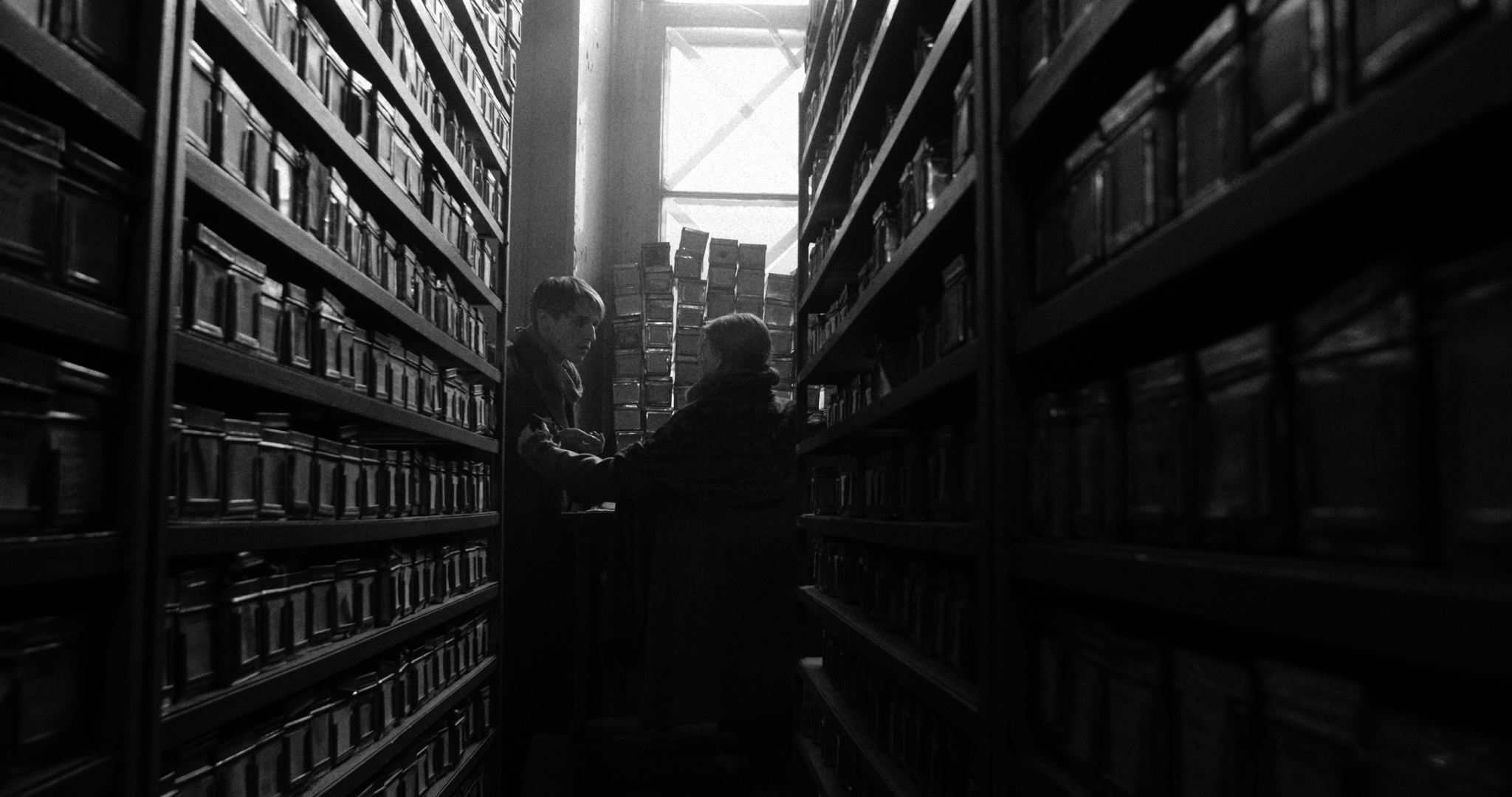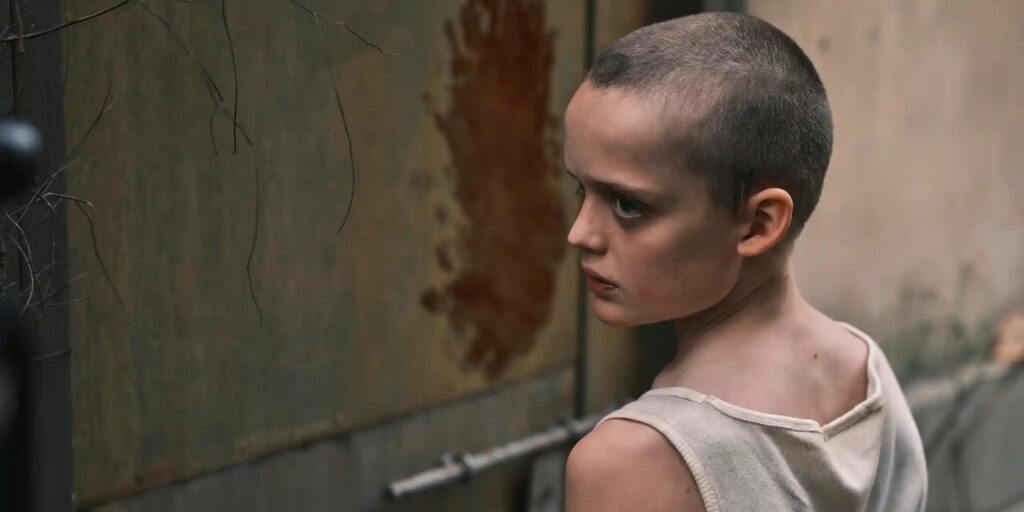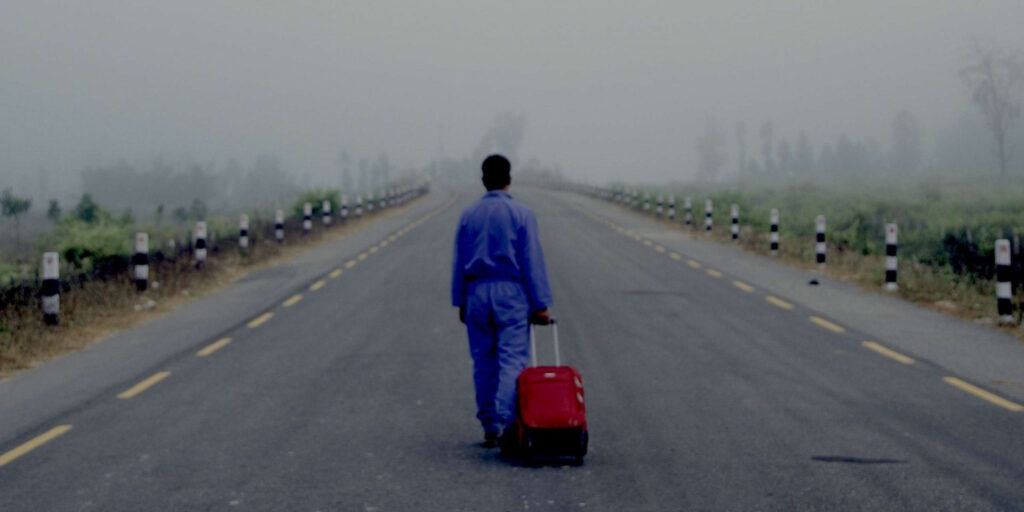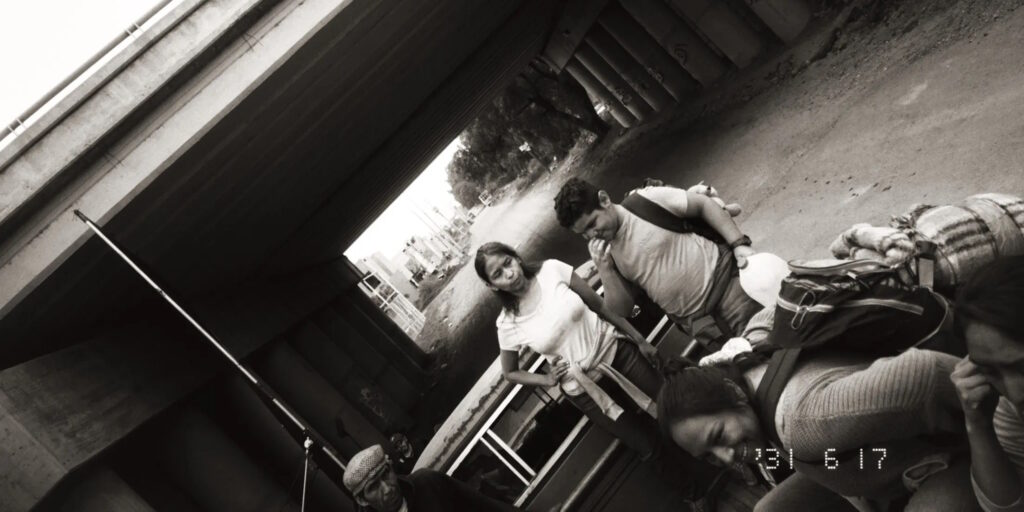[Originally published at Cinema St. Louis’ The Lens.]
“A clock, hanging from a fragment of a wall, still ticking.” A particularly striking detail observed in the wreckage of a futuristic war-torn Leningrad, this line aptly describes the tireless efforts of those at the center of Jessica Oreck’s One Man Dies a Million Times. The documentarian’s narrative-feature debut transposes the 900-day siege of Leningrad into the future, swapping the historical event’s World War II time frame with a nonspecific time to come. As the Russian port city is ravaged by the effects of the years-long blockade, the devoted scientists at the N.I. Vavilov Institute of Plant Genetic Resources hold fast to the belief that their enormous inventory of edible seeds must be protected at all costs — even as they and their fellow citizens grow increasingly moribund.
Oreck focuses the real-life tale of survival on two young botanists, Alyssa (Alyssa Lozovskaya) and Maksim (Maksim Blinov). Audiences only get a glimpse of their lives before the war, but their relationship never loses its innocence despite the cataclysmic events occurring around them. They almost seem oblivious to it, at least for a time. Honking cars in distant traffic have given way to echoing bombs leveling outlying city blocks, yet their youthful crush remains unshaken. If ever there was an excuse to circumvent the torture of will-they-or-won’t-they flirtation, living in wartime would be it. And yet Alyssa and Maksim’s romance is sincerely chaste. Their pureheartedness manifests itself in their dedication to the cause: defend biodiversity for future generations, even in the face of starvation.
This task grows progressively more difficult as the beleaguerment drags on through the winter. Attempts to recollect better, brighter times are interrupted by unshakeable thoughts of unspeakable tragedies. Intruders and thieves try to smash and grab anything they can. It’s not just outsiders, either: even fellow scientists at the institute have to be stopped from furtively slipping seeds into their pockets and taking them home to famished relatives. Oreck’s long takes, minimal coverage, and observational approach make Alyssa and Maksim’s gradual descent into disassociation all the more visceral. What’s the point of risking one’s life for a postwar reconstruction that might not ever come? How does one define humanity without proper food, water, shelter, or warmth? When — if — the siege ever ends, how can one possibly bear the weight of so much loss? This hellish reality takes Alyssa and Maksim to the brink, then pushes them beyond it.
The film is bookended with a series of title cards contextualizing both what is about to be seen and what has just been seen. Although certainly informative — outlining the central conceit as a preface and elucidating the subtext of the film as a postscript — one wonders what the impact would have been if these explainers were greatly reduced (or outright removed entirely). Climate change, fleeting biosecurity, the corporatization of agriculture, genetic modification: These are the present and predicted threats that endanger the planet’s most vital plant life. While the real-life Vavilov Institute had only been fortifying its natural resources for 20 years at the time of the historical siege of Leningrad, 80 years have since passed. Its importance is presumably easier to comprehend today, after more than a century of seed collection, than in 1941, when the institution was still relatively young and the ecological threats facing the world were shrouded in mystery. This logical hair-splitting is perpetuated only by the opening and closing text, which makes one long for its omission.
To his credit, cinematographer Sean Price Williams — Jessica Oreck’s regular DP since her first documentary, Beetle Queen Conquers Tokyo (2009) — captures an aesthetic that does more to highlight the film’s deeper meaning than any one title card. His rough-textured handheld camerawork has been a vital component of some of the most notable independent films of the past 15 years, and Williams’ work on One Man Dies a Million Times is no exception. Black-and-white images of death, decay, and destruction — peppered with brief glimpses of color in burning embers, bleeding wounds, and sparkling flares — effectively convey the desolation of Alyssa and Maksim’s pallid existence.
Simply labeling the work “Tarkovskyesque” would be reducing it to mere mimicry of one of the Soviet era’s most influential filmmakers. There are shades of Tarkovsky, to be sure — ranging from Ivan’s Childhood (1962) to Andrei Rublev (1966) to The Sacrifice (1986). Eisenstein, too — a shot of baskets swinging from the ceiling immediately recalls a similar one of sailors in hammocks from Battleship Potemkin (1925). In spite of these cinematographic allusions, One Man Dies a Million Times is foremost the work of Sean Price Williams and Jessica Oreck.
Therein lies another question worth asking: Can two American filmmakers accurately and appropriately convey another nation’s most destructive tragedy? What’s more, is it even their story to tell? Whatever the answer may be, altering the dates and choosing not to even name the aggressors undoubtedly helps their case significantly. This removes any possibility of accidental or intentional romanticization surrounding the events that took place in St. Petersburg during World War II. Nostalgia is an inherent part of any period piece, whether it’s meant to be there or not — circumventing any chance of sentimentality or wistfulness about something so ineffably tragic is unquestionably a smart move.
Also worth mentioning: There’s a considerable amount of internalized anti-Russian sentiment in American schooling and culture at large, which raises further concerns about a U.S. take on a decidedly non-U.S. event. Oreck’s interests as a filmmaker are first and foremost in ethnobiology — as evidenced by her previous documentaries set around the history of insects in Japan and the practice of reindeer herding in Finland — which grants her more leeway here than perhaps another, less proven filmmaker might receive. One Man Dies a Million Times demonstrates plenty of care toward the Russian people and their history, but this is a film primarily concerned with the conservation of plant life above all else. In the end, it’s this specific hyperfocus that allows her to pull off this tightrope walk between appropriate and appropriation.
Throughout Friedrich Nietzsche’s writing in the late 1800s, the philosopher returns to the doctrine of eternal recurrence. This concept posits that everything that has happened has already happened and will continue to happen an infinite number of times in an infinite amount of space. In other words: “A clock, hanging from a fragment of a wall, still ticking.” The siege of Leningrad brought 900 days of misery to the former Russian capital. As Oreck asserts in One Man Dies a Million Times — bluntly, but with urgency — history is destined to repeat itself, even if the wall crumbles and the clock stops ticking. A grim prospect, but one that has shown itself to be true again and again. Glimmers of color can provide hope in the darkness, but the ultimate defense mechanism is knowing the past. Not only does it allow mankind to understand the present, but also to prepare for the future.
One Man Dies a Million Times screens nightly at 7:30 p.m. from Sept. 23 – 25 at the Webster University Film Series.




